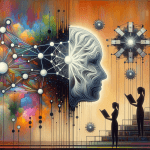Exploring the Present and Future of Generative AI
Generative AI, a branch of artificial intelligence that focuses on creating new content, has been making significant strides in recent years. From generating realistic images to composing music and even writing poetry, generative AI technology has the potential to revolutionize various industries. In this article, we will delve into the present state of generative AI, explore its current applications and developments, and consider what the future holds for this exciting technology.
Understanding Generative AI Technology
Generative AI, also known as generative adversarial networks (GANs), involves two neural networks – a generator and a discriminator – that work together to create new content. The generator produces data, such as images or text, while the discriminator evaluates the generated content and provides feedback to the generator to improve its output. This iterative process results in the generation of increasingly realistic and high-quality content. Generative AI technology has shown remarkable progress in generating images, videos, and even deepfake videos that are indistinguishable from real footage.
Current Applications and Developments
Generative AI has been applied in various fields, including art, design, and entertainment. Artists and designers use generative AI to create unique and innovative designs, while filmmakers and game developers use it to generate lifelike animations and special effects. In healthcare, generative AI is used to create synthetic data for training medical imaging algorithms and to generate personalized treatment plans for patients. However, the technology also raises ethical concerns, such as the misuse of deepfake videos for spreading misinformation or creating fake news.
Looking Ahead: The Future of Generative AI
As generative AI continues to evolve, researchers and developers are exploring new applications and pushing the boundaries of what is possible. In the future, generative AI could be used to enhance virtual reality experiences, create interactive storytelling platforms, and even assist in drug discovery and molecular design. However, challenges such as ensuring the ethical use of generative AI, addressing biases in the generated content, and improving the interpretability of AI-generated outputs will need to be addressed. Despite these challenges, the future of generative AI looks promising, with the potential to revolutionize creativity, innovation, and problem-solving in countless industries.
In conclusion, generative AI technology has come a long way and holds immense potential for transforming various sectors. From creating art and music to advancing healthcare and scientific research, generative AI is poised to revolutionize the way we interact with technology and the world around us. As we continue to explore the present capabilities and future possibilities of generative AI, it is essential to approach its development and application with caution, ensuring that ethical considerations and societal impacts are carefully considered. With responsible use and continued innovation, generative AI has the power to shape a more creative, diverse, and inclusive future for all.


Comments
Exploring the Present and Future of Generative AI — No Comments
HTML tags allowed in your comment: <a href="" title=""> <abbr title=""> <acronym title=""> <b> <blockquote cite=""> <cite> <code> <del datetime=""> <em> <i> <q cite=""> <s> <strike> <strong>